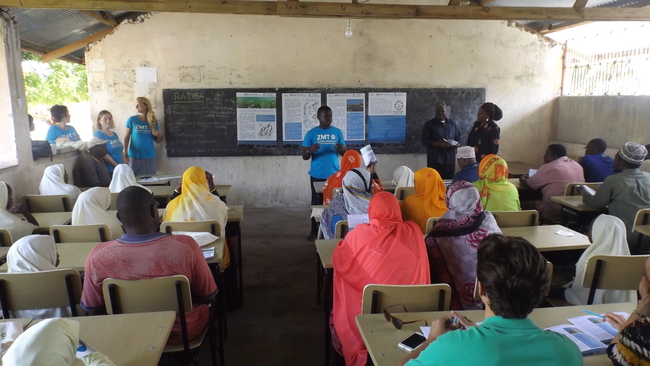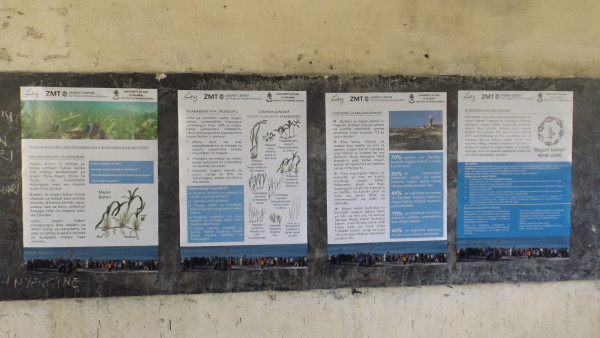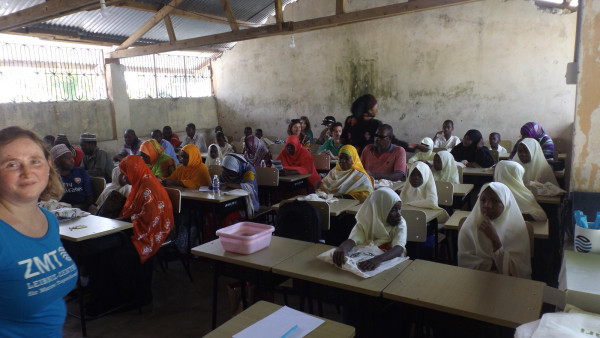25/11/2019 | ZMT's first ‘Seagrass for Life’ workshop took place at the primary school in Uroa on the East coast of Zanzibar on November 16. More than 60 different stakeholders from Zanzibar participated with scientists, seaweed farmers, fishermen, teachers and students discussing in lively rounds the ecological and economic importance of seed-based seagrass restoration in Zanzibar. Zanzibar is a biodiversity hotspot for seagrasses worldwide, with 12 species of seagrass found along its coastal waters. They play a vital role for the local community, including fisherman and seaweed farmers, who depend on seagrass habitat for their livelihoods.
Children from four local schools also attended the workshop to learn about the importance of seagrasses. As part of this process, they enjoyed a morning of painting the different seagrass parts and the fish and other marine animals that live in the seagrass meadows. The workshop was organised as part of the ZMT funded ROOTSEA project by ZMT’s research group 'Algae and Seagrass Ecology', headed by Dr. Mirta Teichberg. They partnered with the Institute of Marine Science at the University of Dar es Salaam and also the Zanzibar Fisheries Research Institute, with great support from many ISATEC MSc students.
The workshop is only the starting point for further citizen science engagement. As part of the project, the four local schools will participate in a seagrass fruit collection along the beach in the month of January. Each school will collect fruits that drift ashore along with the seagrass wrack, and bring the fruits back to the classroom for counting. The children will also get a chance to see the fruits open up, exposing the seeds inside, which quickly grow out into seedlings. The seedlings will then be planted back into the sea, coordinated by an ISATEC MSc student, Omar Haji, who is carrying out an experimental restoration trial of seedlings under varying conditions as part of his MSc thesis research.
This week, Omar, MSc student Debby Bunmi, and ZMT post-doc Dr. E. Fay Belshe will start plant seedlings that have been growing under different sediment conditions in the hatchery of the Food and Agriculture Organization of the United Nations (FAO) which is located near the town of Uroa. For this transplantation trial, they will cooperate with seaweed farmers who generally place their seaweed farms on top of seagrass meadows. The aim is to work together with the seaweed farmers to co-plant seaweed with seagrass seedlings so that the natural habitat is less impacted by farming practices and seaweed farms also benefit from the ecosystem services that the seagrasses provide.











































